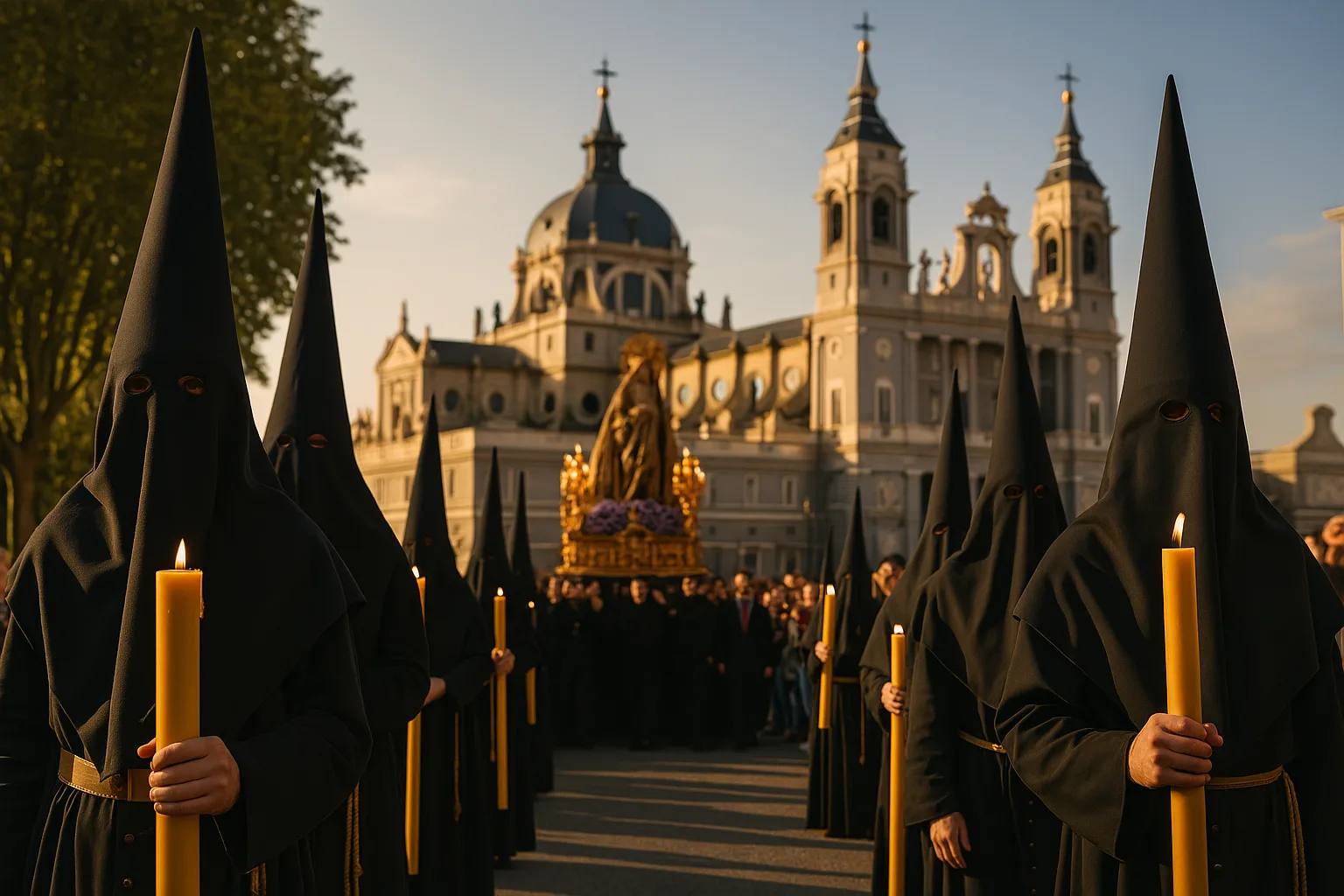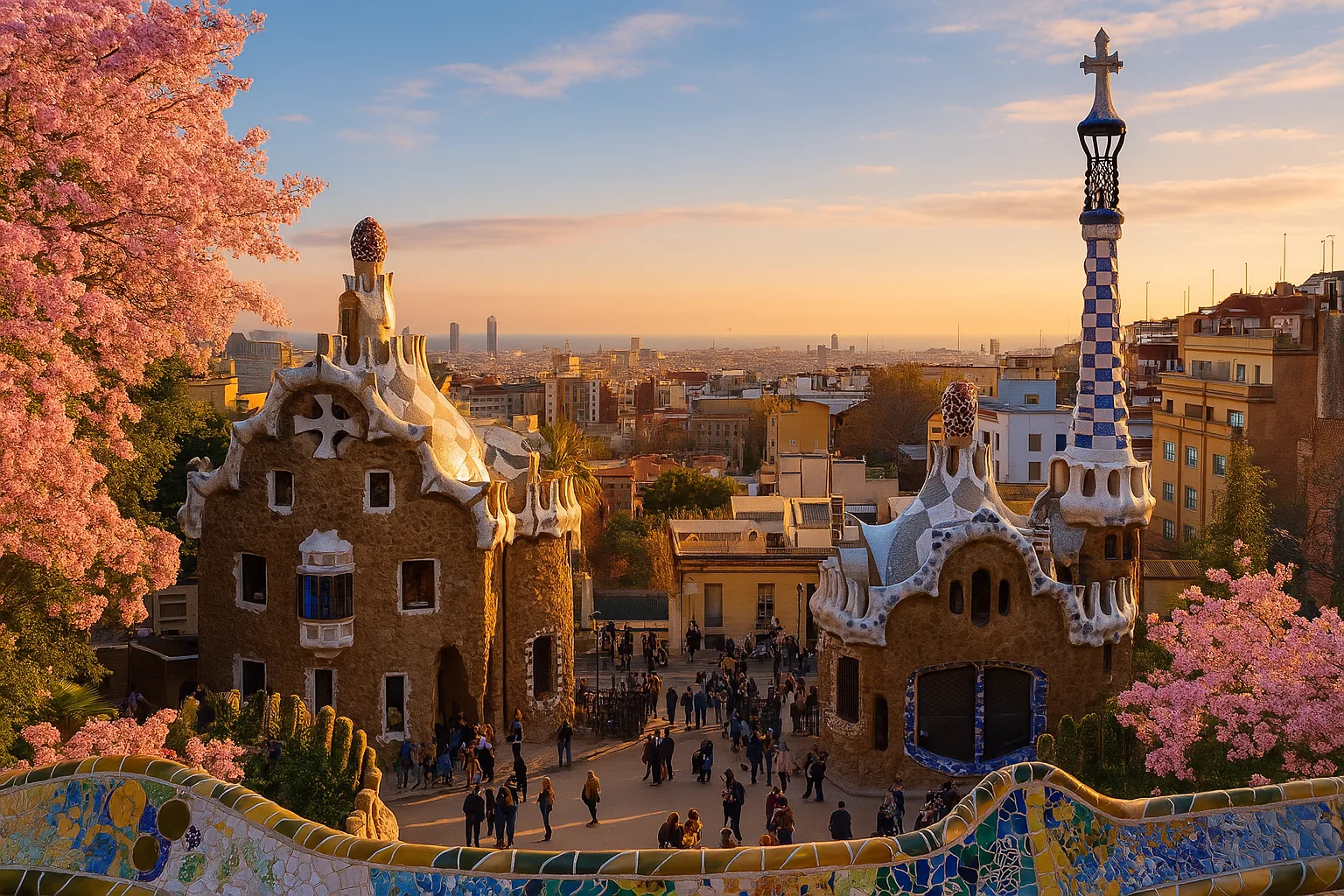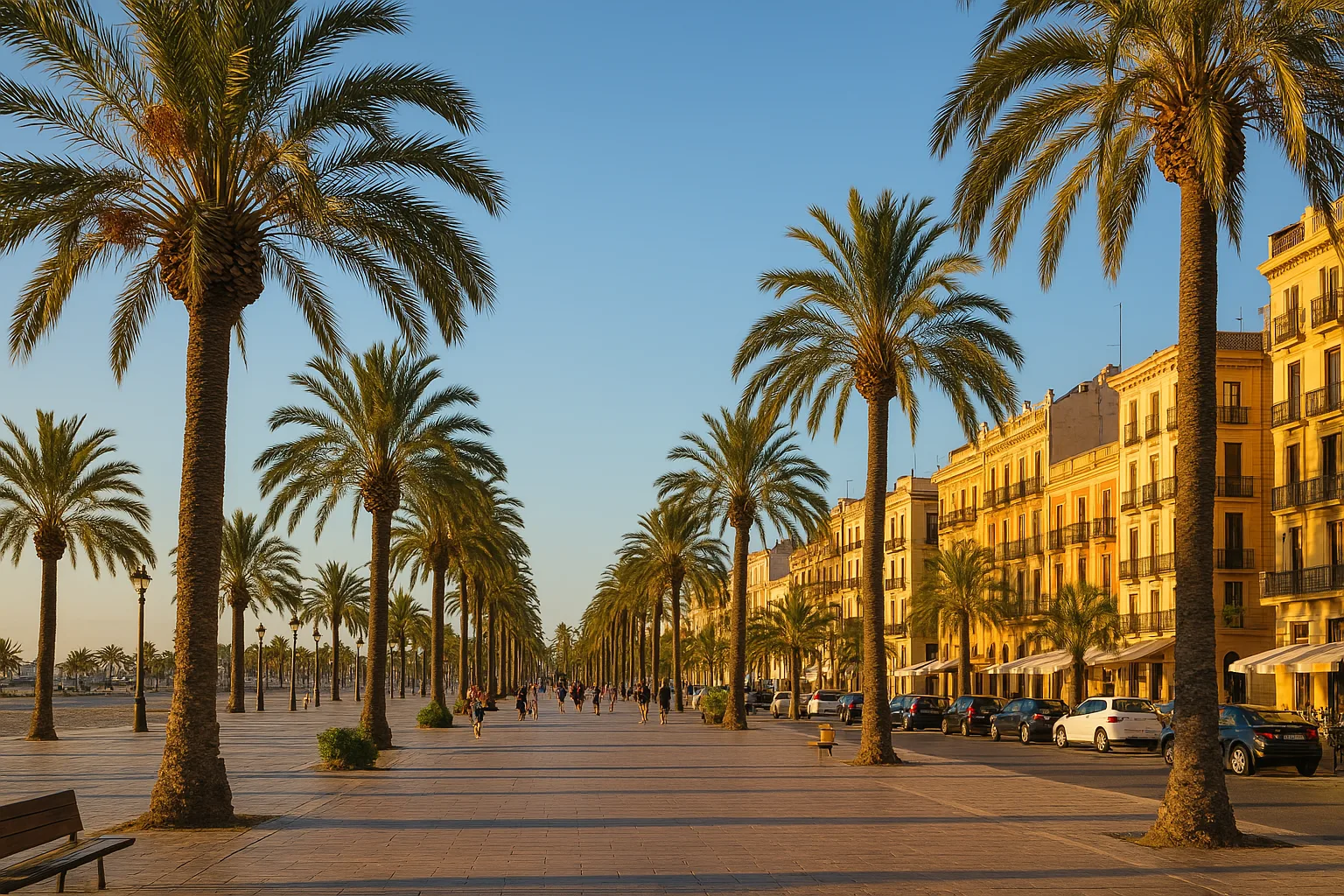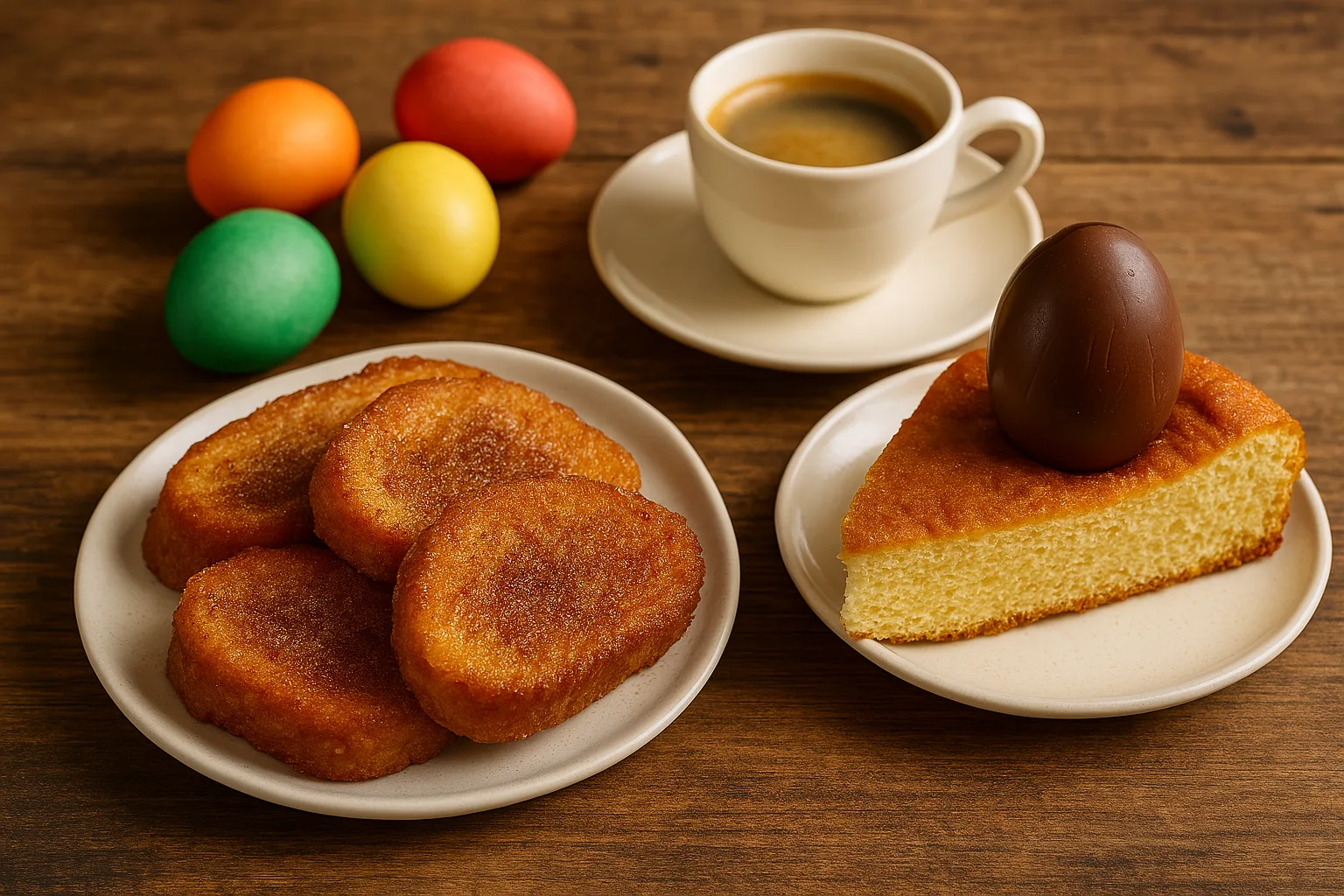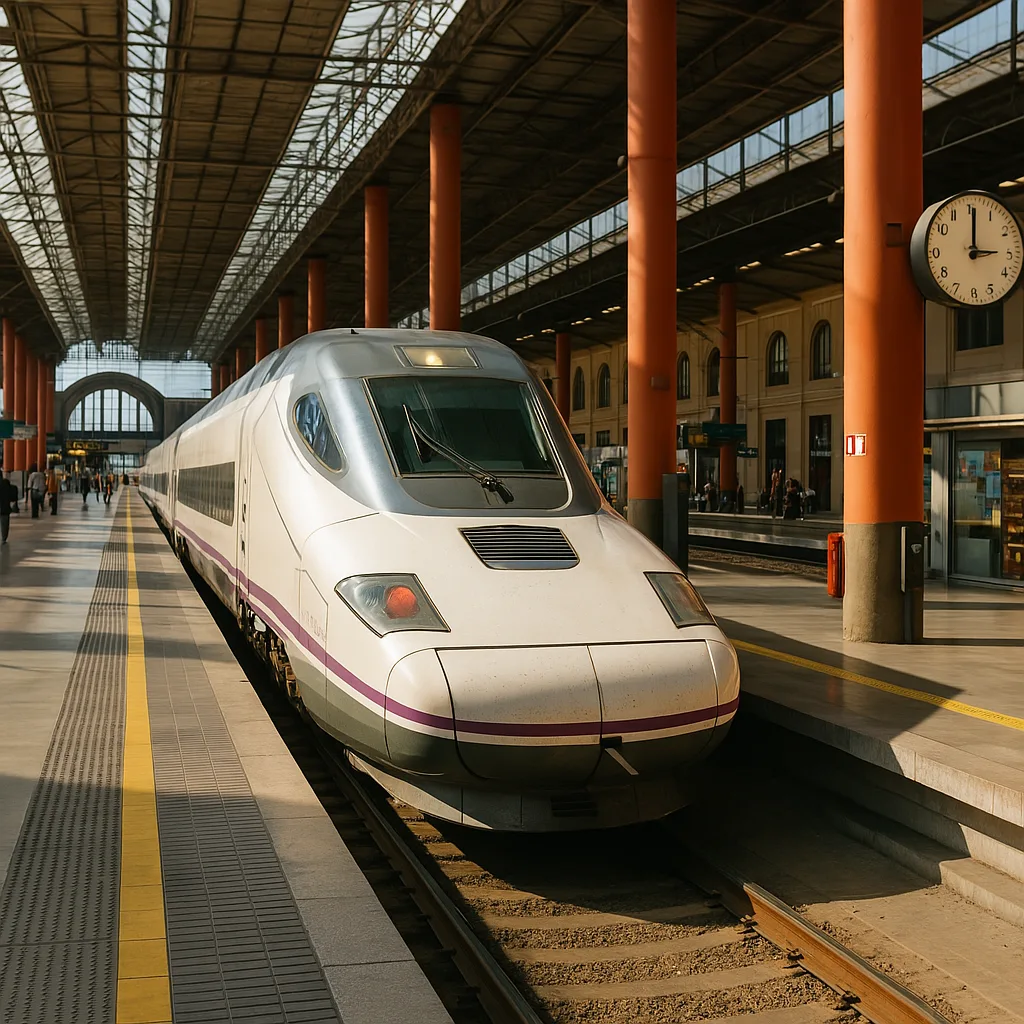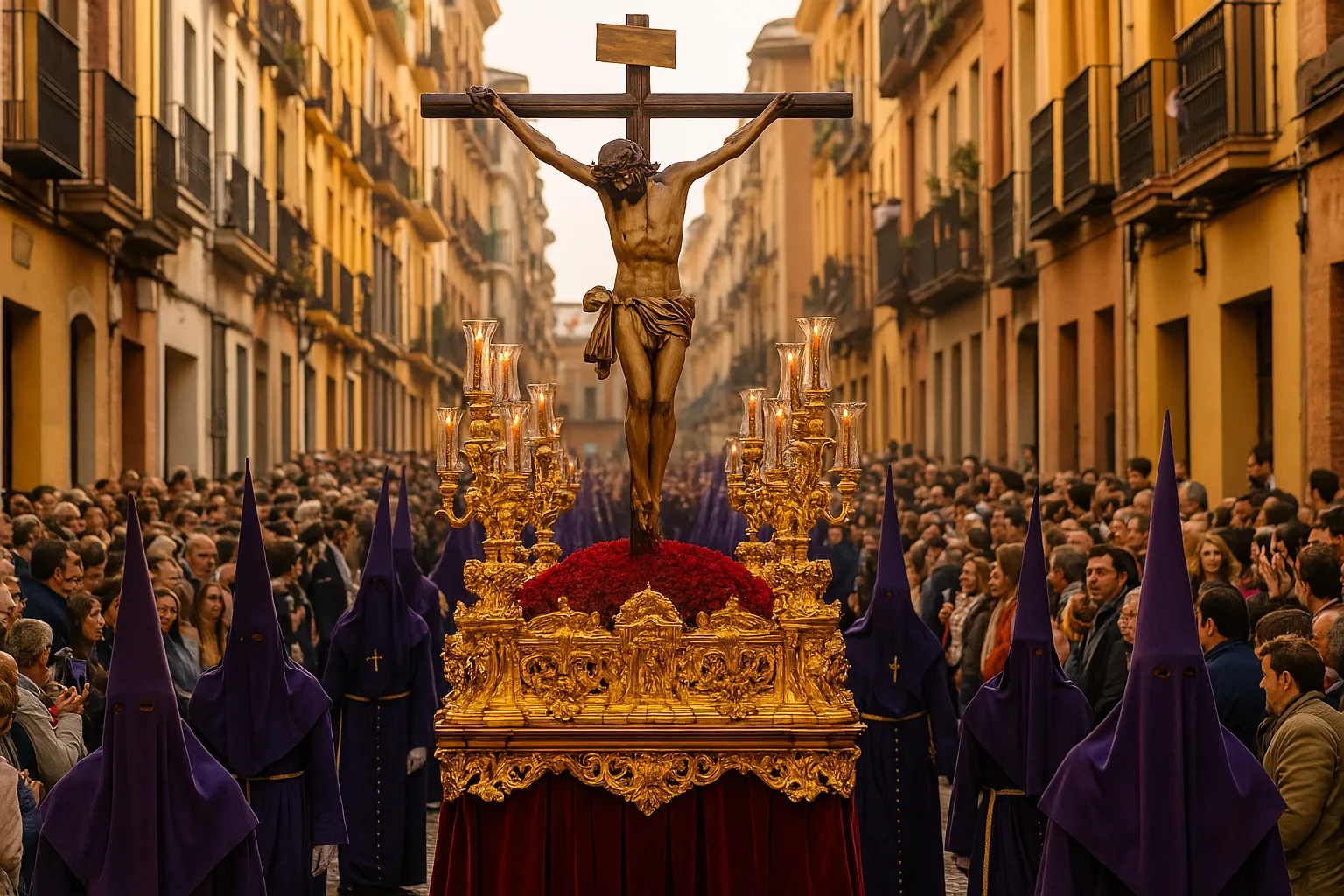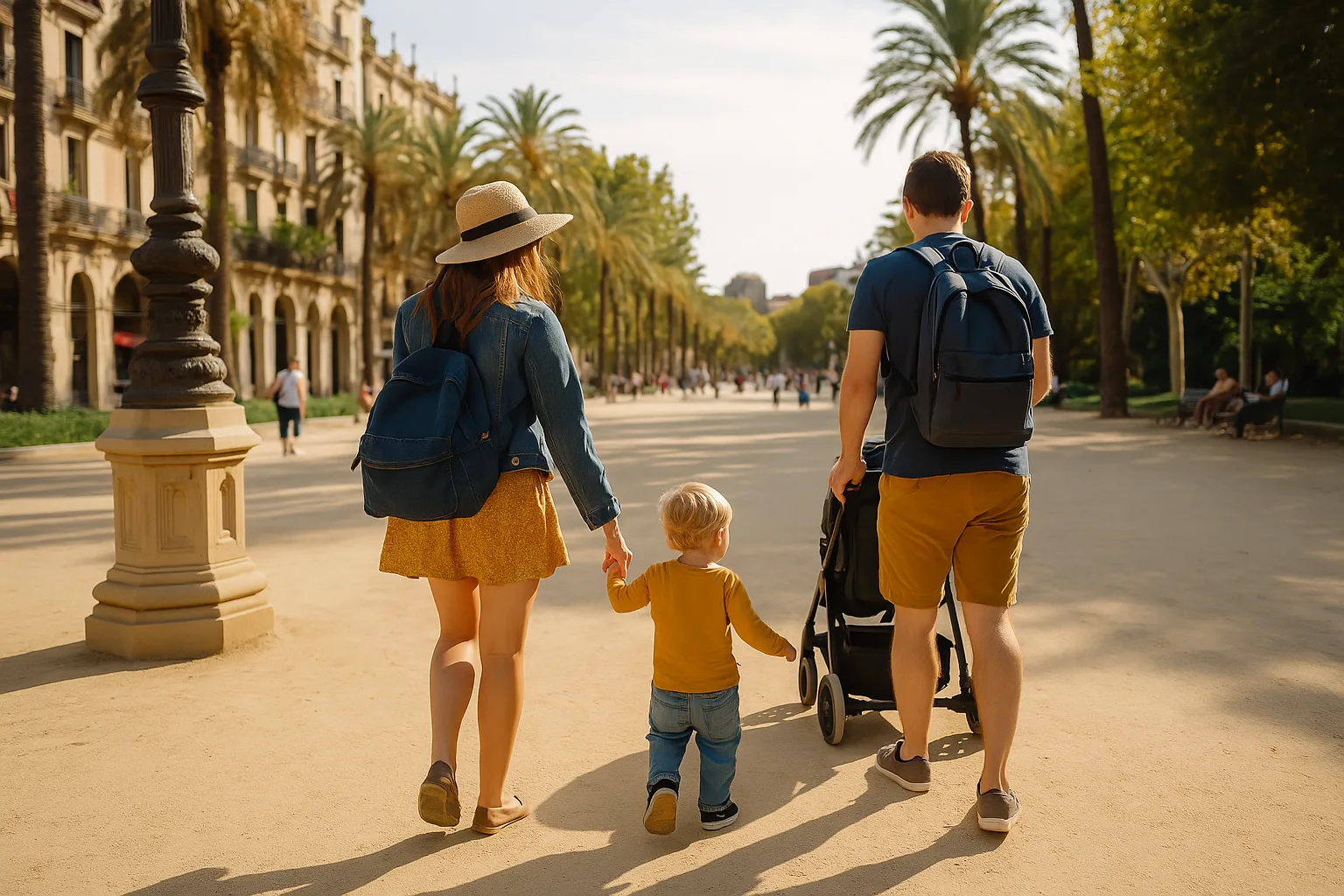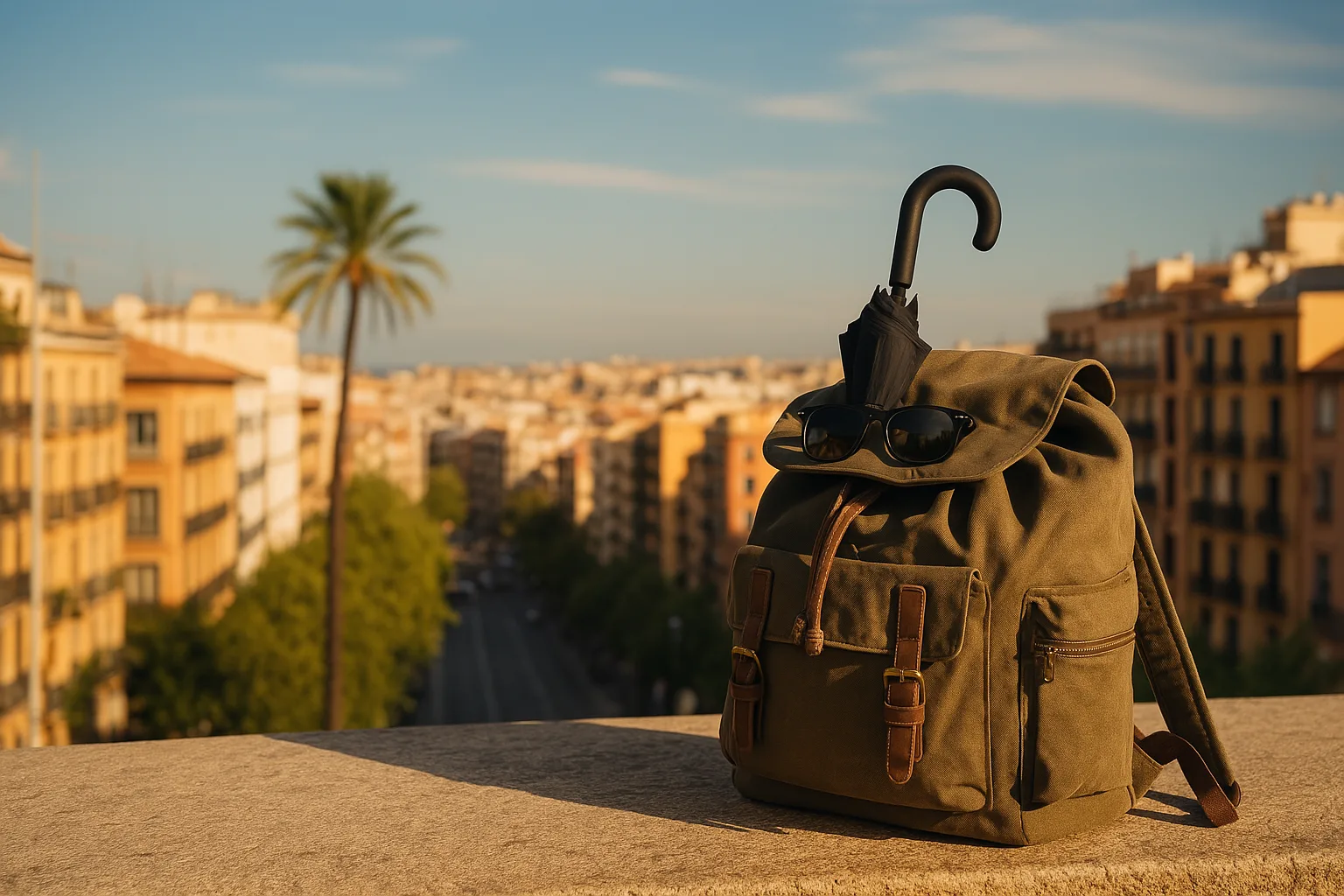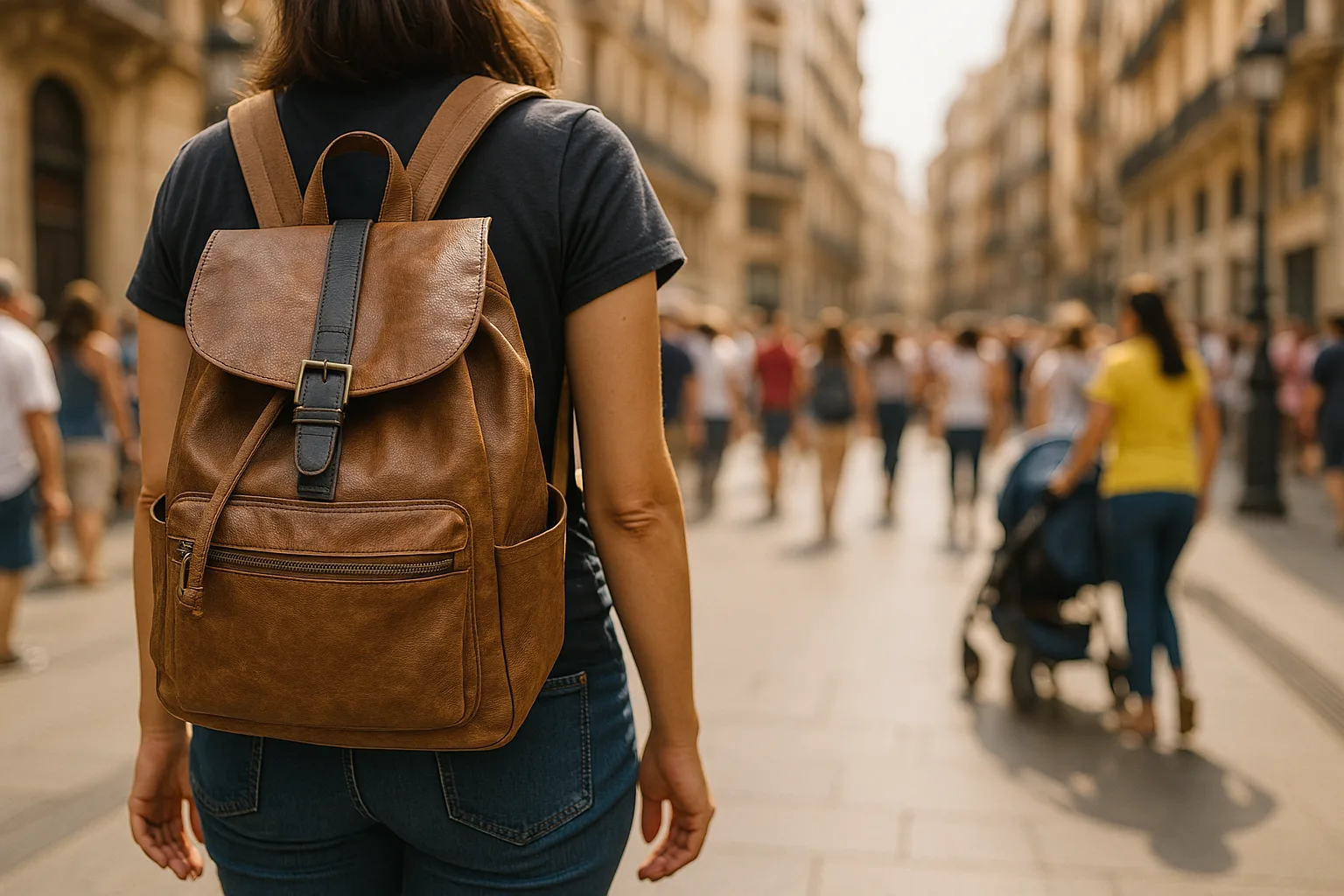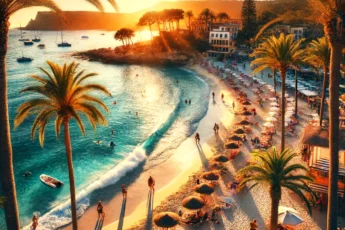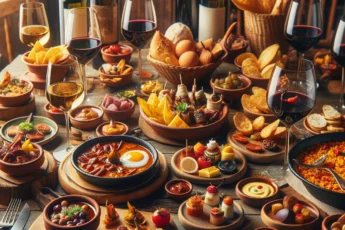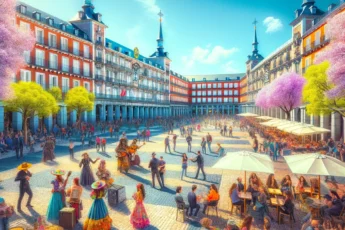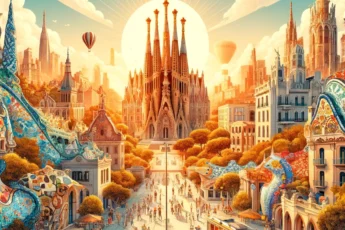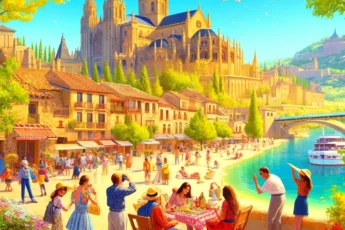Easter 2025 in Spain is not only a time of religious holidays, but also one of the most important socio-cultural events in the country. Throughout Holy Week - Semana Santa - the streets of Madrid, Barcelona and Valencia turn into the scenes of living mysteries. Hundreds of thousands of participants and viewers observe the processions of penitential brotherhoods, accompanied by music, incense and elaborately carved figures. It is a holiday that combines spirituality with a tradition passed on for centuries - and 2025 will not be an exception. It is worth knowing where and how to experience them best.
Semana Santa in Spain - a holiday full of tradition and emotions
Easter in Spain 2025 is not only a time of religious reflection, but also one of the most spectacular events in Europe. Semana Santa , or Holy Week, is a period of procession, art and thousands of participants on the streets. These celebrations have strongly rooted traditions in different regions of Spain, and their course differs depending on the city. In this block of flats we will look at their genesis, course and symbolism - without which Spanish Easter cannot be understood.
History of Seman Santa
The roots of Semana Santa date back to the 16th century, when the Catholic Church wanted to bring the faithful the story of the Passion through the visual and symbolic form. Penitent brotherhoods ( Cofradías ) began to organize processions with the figures of Christ and Mary, carrying them through cities in the rhythm of drums and funeral marches. For centuries, these traditions have evolved - today it is not only a religious act, but also an element of cultural identity and pride of local communities. In many families, participation in the procession is passed down from generation to generation.
What do processions and celebrations look like in various regions
Semana Santa's processions differ in style and atmosphere depending on the region. In Andalusia - especially in Seville or Malaga - they are theatrical, full of singing and emotions. In Catalonia, especially in Tarragon, they are more harsh, with an emphasis on peace and contemplation. Madrid combines both styles - it offers both modern processions and traditional marches with incense. There is a stiff order in each city: each procession has a fixed route, start time and the brotherhood responsible for the organization. Participants wear characteristic robes and hoods, symbolizing penance and anonymity towards God.
Why is Semana Santa more than just a religious holiday?
Semana Santa is not only a religious experience - it is also a spectacle of culture and tradition. For the Spaniards it is a time of community, family meetings and artistic expression. Many cities treat this celebration as the most important event of the year - with preparations lasting months. Regardless of faith, participation in a procession is an experience that is hard to forget.
The most important symbols of Seman Santa
- Figures (Pasos) - sculptures depicting the scenes of the Passion and the figure of Mary, often historic, carried by many people at once.
- Haptras (CAPIROTES) - conical headgear symbolizing penance and spiritual anonymity.
- Brotherhoods (Cofradías) - religious organizations responsible for processions, often related to a specific parish.
- Music - brass orchestras playing funeral or religious flamenco.
- Candles and incense - symbols of light and purification.
Comparison of Seman Santa: Andalusia, Catalonia, Madrid
| Region | Style | Known cities | Atmosphere |
|---|---|---|---|
| Andalusia | Expressive, theatrical | Seville, Malaga, Granada | Loud, emotional, spectacular |
| Catalonia | Raw, reflective | Tarragona, Barcelona | Quiet, restrained, spiritual |
| Madrid | Mixed, classic | Madrid | Sustainable - tradition and modernity |
Easter in Madrid - traditions, events and practical advice
Easter in Madrid 2025 falls on April 20, and the entire celebration of Seman Santa lasts from April 13 to 20. This is a special week in which the capital of Spain comes alive thanks to religious processions, sacred concerts and Easter traditions. Madrid combines classics with modernity - you can see here both silent penitential marches and modern exhibitions or events for families with children. Check what is worth planning to fully use the holiday time.
The most famous processions in Madrid
The most famous procession in Madrid is Jesús Nazareno de Medinaceli , which takes place on Good Friday and traditionally gathers thousands of faithful at the Basilica of Medinaceli. The procession of silence is equally popular ( trial Del Silencio ), organized by the Brotherhood of Cristo de la fe y del Perdón . It takes place in the evening on Good Friday, in full silence and focus - this is one of the most moving shows. The processions usually start from churches in the center: Basilica Medinaceli, Real Colegiata de San Isidro, Iglesia de San Ginés and Almudena.
What to do in Madrid on Easter Sunday
On Easter Sunday (April 20) there is a calm, family atmosphere in Madrid. Many museums, such as Prado or Reina Sofía , work according to changed hours - it is worth checking before your visit. It is worth going to the Retiro Park or visit the Almuden Cathedral , where a solemn mass takes place. If the weather is good, Madrid people are happy to walk around the Sabatini gardens or go to Brunch in one of the local cafes. The attraction of the day is also the procession of the resurrection on Plaza Mayor - full of music and symbolism of joy.
Schedule of the most important processions of Seman Santa in Madrid 2025
| Date | Time | Procession | Starting point |
|---|---|---|---|
| April 13 (Palm Sunday) | 17:00 | La Borriquita | Cathedral of Almudena |
| April 18 (Good Friday) | 19:00 | Jesús de Medinaceli | Basilica of Medinaceli |
| April 18 (Good Friday) | 21:00 | Procession of silence | Iglesia del Santísimo Cristo de la Fe Fe |
| April 20 (Easter Sunday) | 12:00 | Resurrection procession | Plaza Mayor |
The most interesting attractions open at Easter in Madrid
- Prado Museum - open at limited hours, usually 10: 00–14: 00 (check before the visit).
- Reina Sofía - partly open on Easter, excluding Monday.
- The Royal Palace - often open with less tourist traffic.
- Retiro Park - available daily, unchanged.
- Gran Vía - Open shops and cinemas, though shortened hours.
What is worth booking in advance?
Madrid during Semana Santa visits many tourists, so it's worth booking tickets to museums, accommodation in the center and a table in a restaurant for Easter Sunday. Some processions may require prior registration or coming well in advance - especially those at Plaza Mayor and the Basilica of Medinaceli.
Easter in Barcelona - Catalan customs and celebration
Easter in Barcelona 2025 is a special time when the city combines deeply rooted religious traditions with a rich cultural offer. Semana Santa , or Holy Week, begins on April 13 (Palm Sunday) and lasts until April 20 (Easter Sunday). During this period, Barcelona streets are filled with processions, concerts and local customs that attract both residents and tourists. It is worth knowing the Catalan celebration of Easter to fully experience the atmosphere of this holiday.
Catalan version of Semana Santa
In Barcelona, the celebrations of Seman Santa have a unique character, differing from other regions of Spain. The processions are less numerous, but also solemn. On Good Friday, April 18, the procession of our Father Jesus the Great Power and Mary Santísima de la Esperanza Macarena , organized by the pontifical and royal brotherhood of the Nazareans. It starts at 17:00 in Parròquia de Sant Agustí and passes through the historic streets of the city. On the same day at 18:30 from Iglesia de San Jaime the procession of the Mother of God sets out , passing by, among others Through Plaça de Sant Jaume and ending at the cathedral, where around 20:30 Cardinal Juan José Omella welcomes the participants.
The best places for an Easter walk and relaxation
Easter is a great opportunity to discover the charms of Barcelona. Park Güell , designed by Gaudí, offers not only great views of the city, but also unique architecture. Walking around the Gothic district , you can feel the historic atmosphere of the city by visiting hidden squares and historic churches. La Rambla is teeming with life, and along it there are numerous cafes and stalls with local delicacies. It is also worth visiting the Montjuïc hill , where there are gardens, museums and the famous magical fountain, offering evening light and sound shows.
Interesting events and concerts
- ELS40 Primavera POP 2025 - April 12 at Olímpic Arena in Badalon will be a music festival with the participation of artists such as Ruslana.
- Lady Gagi concert - 28, 29 and 31 October at Palau Sant Jordi. Tickets available from April 3.
- Feria de Abril de Catalunya - From April 25, the Catalan version of the Andalusian holiday, full of music, dance and traditional dishes, has been taking place on Eslanada Parc del Fòrum.
Open museums and attractions during Easter
| Attraction | Opening hours | Comments |
|---|---|---|
| Picasso Museum | April 15: 9: 00–20: 00; 17–19 April: 9: 00–21: 00; April 20: 9: 00–20: 00 | Closed on April 14 (Easter Monday) |
| Sagrada Familia | Daily: 9: 00–20: 00 | It is worth booking tickets in advance |
| Park Güell | Daily: 8: 00–21: 30 | Limited number of entries a day |
| Casa Batlló | Daily: 9: 00–21: 00 | Last entrance at 20:00 |
| La Pedrera (Casa Milà) | Daily: 9: 00–20: 30 | Evening concerts on the roof |
Is everything closed on Holy Sunday?
On Easter Sunday (April 20), most shops in Barcelona are closed, but restaurants, cafes and the main tourist attractions such as Sagrada Familia or Park Güell remain open. However, it is worth checking the opening hours.
Easter in Valencia - oranges, palm trees and processions
Easter in Valencia 2025 is a special time when the city comes alive thanks to unique traditions and celebrations. Semana Santa Mariner , i.e. the Sea Holy Week, takes place in the coastal districts of Cabanyal, Canyaamelar and Grau, combining religious processions with the city's maritime heritage. This is a great opportunity to experience local culture, taste traditional dishes and participate in colorful events.
Traditions and processions by the sea
Semana Santa Mariner stands out from other Spanish celebrations of Holy Week. The processions take place in the coastal districts of Valencia, such as Cabanyal, Canyamelar and Grau, where the inhabitants have been associated with the sea for centuries. Participants of the procession carry the figures of saints through streets decorated with flowers and lights, creating a unique atmosphere. On Good Friday at 8:00 am, a ceremony commemorating the sea victims is taking place on the Las Arenas beach, during which flower wreaths are folded on the water. This moving event attracts both residents and tourists.
What the inhabitants of Valencia eat for Easter
During Easter, traditional dishes reign in Valencia, which reflect local flavors and customs. One of the most characteristic dishes is thitaine - a dish resembling ratatouille, prepared from tomatoes, peppers, garlic, pine nuts and salted tuna. Another popular dish is Croquetas de Bacalao , i.e. cod croquettes, crunchy and soft inside. , Mona de Pascua is often served - sweet yeast dough, traditionally decorated with boiled egg, although today, more and more often replaced with chocolate.
Review of the events of Semana Santa Mariner 2025
| Date | Time | Event | Location |
|---|---|---|---|
| April 13 (Palm Sunday) | 9:45 | Palm procession | Plaza de Nuestra Señora de los Ángeles |
| April 17 (Holy Thursday) | 20:00 | Croduction procession | Avenida del Mediterráneo |
| April 18 (Good Friday) | 8:00 | Homage to the sea victims | Playa de las Arenas |
| April 18 (Good Friday) | 18:30 | The procession of the Holy Funeral | Cabanyal and Canyamelar streets |
| April 20 (Easter Sunday) | 13:00 | Resurrection procession | Avenida del Mediterráneo |
Places with Easter cuisine
- Casa Montaña - a historic tavern in the Cabanyal district, known for traditional tapas and cod croquettes.
- La Pepica - a seaside restaurant famous for the authentic Paella and other local dishes.
- El Forn del Carmen - a bakery offering a wide selection of traditional pastries, including Mona de Pascua.
- Restaurante Bodega Casa Baldo - a place where you can try thitaine and other regional specialties.
- Pastelería Monpl - a confectionery specializing in traditional Easter sweets.
What is the difference between Semana Santa in Valencia and the rest of the country?
Semana Santa in Valencia, known as Semana Santa Mariner, is distinguished by a strong relationship with the sea. Processions take place in seaside districts, and participants often pay tribute to the victims of the sea, which is not typical for other regions of Spain. In addition, residents decorate their homes with saints, creating a unique atmosphere of the holiday.
Spanish Easter dishes - what is worth trying?
Easter in Spain is not only a time of religious rites, but also a unique period of culinary traditions. Each region has its own unique dishes that appear on Easter tables. It is worth trying classic Spanish specialties, such as Torrijas or Mona de Pascua , which are an integral part of the Spanish celebrations of Christmas. Time to discover flavors that have over age traditions and gain new lovers every year.
Classic dishes and sweets (Torrijas, Mona de Pascua)
In Spain, as in many other countries, Easter is a time of sweet and nutritious dishes. The most famous Easter snack are Torrijas - the Spanish version of French toast. The bread is in milk, then coat in the egg and fry until gold, sprinkled with sugar and cinnamon. They are often served with honey or fruit. The second symbol of Spanish Easter is Mona de Pascua - a traditional cake that appears in Catalonia and Valencia. It is a sweet, yeast cake decorated with chocolate eggs, which is consumed by the whole family on Easter Sunday.
Regional Culinary differences - Madrid vs Valencia vs Catalonia
Spain is a country that can boast of many regional specialties that differ depending on the region. In Madrid, during Easter, Bacalao a La Vizcaína - cod prepared in traditional tomato sauce with paprika and onions. In Valencia, the popular Easter dish is arroz con bacalao , i.e. rice with cod, which is flavored with olive oil and garlic. However, in Catalonia, you can't miss Canelons - pasta stuffed with meat from the remains of Easter dishes. Such dishes are part of the Catalan tradition and are served for dinner on the second day of Easter.
7 of the most popular dishes
- Torrijas - Spanish version of French toast, most often served with cinnamon, sugar or honey.
- Mona de Pascua - sweet yeast dough, decorated with chocolate eggs, popular in Catalonia and Valencia.
- Arroz con bacalao - a traditional dish with rice and cod, popular in Valencia.
- Bacalao a la Vizcaína - cod in tomato sauce with peppers and onions, typical of Madrid.
- Canelons - a Catalan pasta dish, in which meat from the remains of Easter dishes is wrapped in pasta.
- Fideuà - a kind of Paella with pasta, characteristic of the Valencia region.
- Monas de Pascua de Chocolate - the version of Mony de Pascua, in which the cake is decorated with chocolate eggs.
Review of traditional dishes and sweets from the regions
| Region | Traditional dish | Description |
|---|---|---|
| Madrid | Bacalao a la vizcaína | Cod in tomato sauce with peppers and onions. |
| Valencia | Arroz con bacalao | Rice with cod, flavored with garlic and olive oil. |
| Catalonia | Canelons | Pasta stuffed with meat from the remains of Easter dishes. |
Where to eat an authentic Easter breakfast?
In Madrid, it's worth going to La Mallorquina , one of the oldest confectionery in the city to try Torrijas with honey. In Valencia, Pastelería Dacosta is the perfect place for Mona de Pascua . However, in Catalonia there is no better place for Canelons than Can Culleretes , one of the oldest restaurants in Barcelona, which serves traditional Catalan dishes since 1786.
Practical guide: transport, shops, opening hours
When planning a trip to Spain in Easter, it is worth paying attention to changes in the functioning of public transport and opening hours of shops and tourist attractions. Below are important information that will help you plan your trip.
Is a subway, buses and trains?
In Easter, especially during Seman Santa (April 9-16, 2025), public transport in Spain operates with some modifications. Good Friday (April 18, 2025) and Easter Sunday (April 20, 2025) are holidays, which affects timetables. In cities such as Madrid, Barcelona and Valencia, metro, buses and trains will run less often than usual. It is recommended to check the current timetable on the official pages of the carriers before the planned journey.
When are shops and supermarkets closed?
On holiday days, especially on Good Friday and Easter Sunday, many shops and supermarkets in Spain will be closed or will have short opening hours. In smaller towns and outside the main tourist trails, closures may be more common. In large cities, such as Madrid, Barcelona and Valencia, some stores in popular tourist districts can be open, but it is worth checking in advance.
Opening hours of selected attractions in Madrid, Barcelona and Valencia
| City | Attraction | Opening hours |
|---|---|---|
| Madrid | Royal palace | 10: 00-18: 00 (daily) |
| Madrid | Prado Museum | 10: 00–20: 00 (daily) |
| Barcelona | Sagrada Familia | 9: 00–20: 00 (daily) |
| Barcelona | Park Güell | 8: 00–20: 30 (daily) |
| Valencia | Ciudad de las artes y Las Ciencias | 9: 30–19: 00 (daily) |
| Valencia | Oceanographic | 10: 00-18: 00 (daily) |
Open shops and restaurants 24/7
- Madrid : Atocha railway station - with numerous shops and restaurants available 24/7.
- Barcelona : Sants station - offers various services for travelers around the clock.
- Valencia : Valencia Joaquín Sorolla station - access to shops and restaurants 24 hours a day.
How to avoid queues and logistics surprises?
- Reservations in advance: it is recommended to book tickets for tourist attractions and transport in advance to avoid long queues and possible deficiencies.
- Checking current opening hours: Before the planned visit to the tourist attractions or restaurant, it is worth verifying the current opening hours, especially during the holiday season.
- Using mobile applications: many cities offer applications informing about current public transport timetables and current opening hours of facilities.
- Flexibility of plans: During the holiday season it is worth being prepared for possible changes in the day plan, related to closures or changed opening hours.
Travel to Easter to Spain - tickets, accommodation, tips
Planning a trip to Spain for Easter is a great opportunity to experience the unique traditions and culture of this country. In this guide, we will present tips on the purchase of flight tickets, choosing accommodation and we will give practical advice for the upcoming Christmas period.
Where is the best to look for accommodation?
Choosing the right location for accommodation largely affects the comfort and quality of our stay. Depending on your preferences, it is worth considering the following districts in the three main cities of Spain:
- Madrid: the city center (centro) is the heart of Madrid, where the main tourist attractions are located. Districts such as Chueca and Malasaña offer a rich night life, while the Retiro Park provides a calmer atmosphere.
- Barcelona: Eixamample and Russafa districts are known for its modern architecture and closeness to the main attractions. The Old Town (Barri Gòtic) is a maze of narrow streets full of stories, and the El Raval district offers cultural and artistic diversity.
- Valencia: the Old Town (Cutat Vella) is an ideal place for those who want to be close to historical monuments. Eixamample and Russafa districts offer modern apartments and lively cafes, while El Cabanyal provides the proximity of the beach and an authentic atmosphere.
When to buy air tickets for Easter?
The purchase of airline tickets is crucial in advance, especially during the holiday season, when the demand is high. Ticket booking is recommended at least 2-3 months before the planned date of departure. It is also worth monitoring prices, because the average price of air tickets for Easter 2025 dropped from 162 euros to 156 euros compared to the previous year.
Prices of accommodation in 3 cities (Madrid, Barcelona, Valencia)
| City | Average price per night at a 3-star hotel | Average price per night at a 4-star hotel |
|---|---|---|
| Madrid | 350 PLN | PLN 500 |
| Barcelona | PLN 400 | 600 PLN |
| Valencia | 300 PLN | PLN 450 |
*Prices are approximate and may change depending on the date of the booking and the standard of the object.
Recommended stay districts
The choice of district for accommodation affects the comfort and quality of stay. Here are some recommended districts in the three main cities of Spain:
- Madrid: Centro, Chueca, Malasaña, Retiro, Salamanca.
- Barcelona: Eixamample, Gràcia, El Born, Zbelenou, Sants-Montjuïc.
- Valencia: Ciutat Vella, Eixample, Russafa, El Cabanyal, Benimaclet.
Is it worth buying tickets well in advance?
Yes, the purchase of airline tickets and booking accommodation in advance increases the chances of better prices and availability. In Easter, the popularity of tourist destinations is growing, which increases prices and limited availability of places.
Semana Santa's most beautiful processions - where and when it is worth seeing them
Semana Santa in Spain is an amazing combination of deep religiosity and a rich artistic tradition. In this article we present the most spectacular processions that are worth seeing during Holy Week.
The most spectacular processions - a list of cities and dates
During Seman Santa, various cities of Spain organize unique processions that attract both the faithful and tourists. Here are some of the most famous:
- Seville: The processions take place from Palm Sunday (April 13, 2025) to Holy Saturday (April 19, 2025). The city is known for over 60 brotherhoods that present its "Pasos" (platforms with sculptures depicting scenes from the Passion of the Lord).
- Malaga: Processions take place from Palm Sunday to Holy Saturday. Characteristic here are "Tronos" (platforms) carried by the so -called "Costaleros" (carrying), with the participation of numerous faithful.
- Valencia: The celebrations last from Palm Sunday to Easter Sunday. Processions are known for colorful costumes and music, as well as biblical performances.
- Madrid: processions take place from Palm Sunday to Easter Sunday. The center of attention is here "Pasos" from the 17th and 18th centuries, presenting scenes from the Passion.
- Valladolid: The celebrations last from Palm Sunday to Easter Sunday. The city is famous for his seriousness and silence during the procession, as well as for artistic sculptures.
What is the difference between the procession in Madrid, Barcelona and Seville?
Each of these cities has its own unique tradition of the celebration of Seman Santa:
- Madrid: processions are more subdued and focus on the historical "Pasos" from the 17th and 18th centuries. Many brotherhoods come from various districts of the city, which gives processions a local character.
- Barcelona: here the processions are less numerous, but equally exciting. Smaller processions take place in the city center, often with the participation of local brotherhoods and parishes.
- Seville: The city is known for the largest and most spectacular processions in Spain. The streets are filled with crowds, and "Pasos" are often carried by "Costaleros" in a traditional way.
5 of the most beautiful processions in Spain
- The El Cachorro procession in Seville: known for its atmosphere and beauty, takes place on Good Friday.
- The procession of La Borriquita in Madrid: commemorates Jesus' entry to Jerusalem, takes place on Palm Sunday.
- The El Cautivo procession in Malaga: one of the most exciting processions, takes place on Good Friday.
- The procession of La Pasión Viviente in Cáceres: The representation of the Passion with the participation of many actors, takes place on Good Friday.
- The El Exaltación procession in Seville: is characterized by the participation of "horses" and takes place on Holy Thursday.
| City | Date | Characteristic |
|---|---|---|
| Seville | April 13-19, 2025 | The largest processions with the participation of over 60 brotherhoods, presenting a variety of "pasos". |
| Malaga | April 13-19, 2025 | Characteristic "Tronos" carried by "Costaleros", with numerous faithful. |
| Valencia | April 13-19, 2025 | Colorful processions with biblical performances and street music. |
| Madrid | April 13-19, 2025 | Historical "Pasos" from the 17th and 18th centuries, presenting scenes from the Passion. |
| Valladolid | April 13-19, 2025 | Processions based on silence and seriousness, with artistic sculptures. |
Tip: Where to stand to see everything well and not stand in the crowd
To avoid crowds and get the best view of processions, it's worth:
- Arrival in a place in advance, especially in popular points.
- Avoid central streets, where the largest crowds accumulate.
- Use smaller, side streets that offer equally good views.
- Check the procession route in advance and plan the best viewing places.
Easter for families with children - attractions and comfortable planning
Are you planning an Easter trip with children to Spain? Here are some tips on how to make it safe, interesting and comfortable.
Recommended family attractions in Madrid, Barcelona and Valencia
Spain offers many attractions for families with children. Here are some of them:
- Madrid: Zoo Aquarium de Madrid in Casa de Campo is a home for 500 different animal species. Children can admire the fauna from five continents, including Panda Wielkie.
- Barcelona: Park Güell is a colorful park designed by Antoni Gaudi, full of mosaics and fancy shapes, perfect for family walks.
- Valencia: Bioparc is a modern zoo, where animals live in conditions similar to natural. Children can observe here, among others Elephants, hippos and monkeys.
Where to eat with children and what to avoid
In Spain, many restaurants offer a children's friendly menu and special amenities. Here are some of them:
| City | Restaurant | Children's menu | Opening hours |
|---|---|---|---|
| Madrid | El Mundo | Typical Spanish dishes with a play corner | 12:00–22:00 |
| Barcelona | Pizzeria La Familia | Possibility to prepare the pizza yourself | 13:00–23:00 |
| Valencia | Finca de los Abuelos | Children's menu and a garden with a mini zoo | 11:00–21:00 |
It is worth avoiding restaurants in the most tourist places where prices can be higher and the quality is lower.
How not to get stuck in a crowd with a pram - practical advice
- Early exits: Plan visiting popular attractions early in the morning to avoid the biggest crowds.
- Avoiding peaks: Try to avoid peak hours in restaurants and public transport.
- Folding trolley: Always have a folding stroller that is easy to take to a restaurant or museum.
- Route planning: Choose children -friendly places, with facilities such as elevators or ramps.
Weather in Spain on Easter - what to take and how to prepare
When planning a trip to Spain for Easter, it is worth paying attention to weather forecasts to properly pack and enjoy vacation in comfortable conditions.
Typical weather conditions - April in Spain
In April, Spain experiences different weather conditions depending on the region:
- Madrid: average temperatures are about 18 ° C during the day and 8 ° C at night. Rainfall is moderate, with about 40 mm per month.
- Barcelona: On average, 19 ° C during the day and 12 ° C at night. Monthly rainfall is about 50 mm, which indicates a moderate risk of rain.
- Valencia: In this region, average temperatures are 20 ° C during the day and 13 ° C at night, with a rainfall of 30 mm per month, which suggests relatively dry conditions.
How to dress and what to take on a journey
Considering the variable weather conditions, it is recommended to pack clothing for various occasions:
- Layered clothing: a light jacket, sweater and t-shirts will allow you to adapt to changing temperatures.
- Footwear comfortable: perfect for sightseeing and walking around the city.
- Rain accessories: a light raincoat or a small umbrella may prove useful during possible rainfall.
- Sunglasses and a filter cream: will help protect against the sun on sunny days.
Average temperature and rainfall in Madrid, Barcelona, Valencia
| City | Average temperature (° C) | Rainfall (mm) |
|---|---|---|
| Madrid | 18 ° C | 40 mm |
| Barcelona | 19 ° C | 50 mm |
| Valencia | 20 ° C | 30 mm |
What to pack for an Easter trip
- Clothing for various weather conditions
- Comfortable footwear
- Rain accessories
- Sunglasses and a filter cream
- Adapter for electrical outlets (Spain uses type F plugins)
- Basic drugs and hygiene
- Travel documents and backups
Is it worth taking an umbrella? Weather facts from recent years
In recent years, both sunny and rainy days have been recorded in Easter in Spain. For example, in 2024 many regions experienced heavy rainfall, which influenced planned events and processions. That is why it is worth taking with you an umbrella or a raincoat to be prepared for possible weather changes.
Safety and practical tips for tourists
When planning a trip to Spain for Easter, it is worth paying attention to security issues and following local customs to fully enjoy this unique period.
How to behave during the procession
Easter processions in Spain, especially in the Andalusia region, are a deeply rooted tradition. It is important to respect these ceremonies with respect:
- Dress: Avoid clothing revealing your arms and legs above your knees. Although this is not officially required, it is recommended to wear clothes covering the shoulders and knees while participating in processions.
- Behavior: Be quietly and with respect during the procession. Avoid loud conversations and other interference.
- Photographing: Ask for permission before taking photos of procession participants, especially the clergy.
- Safety: watch out for your personal belongings, especially in the crowd.
Tips for families with children
Going to Easter to Spain with children can be an unforgettable experience. Here are some tips to ensure comfort and safety of the youngest:
- Avoid crowds: if possible, choose places away from the main procession routes to avoid large gatherings.
- Meal planning: pay attention to the opening hours of the restaurant, because during the holiday season they may change.
- Protection against sun: remember to cover the head, sun cream and adequate hydration for children.
- Safety: Keep children close to each other, especially in the crowd, and sensitized them to the basic safety rules.
10 most important safety rules
- Watch out for your things: Always keep an eye on your bags and wallets, especially in crowded places.
- Avoid unknown people: do not get involved in conversations with strangers who can try to divert your attention.
- Know local emergency numbers: in Spain the emergency number is 112.
- Store copies of documents: Keep your passports and other important documents in a safe place.
- Set up the meeting point: In case of loss, make an appointment with your family to a specific meeting point.
- Watch out for food and drink: consume food and drinks only in places with a good reputation.
- Avoid wearing large sums of money: pay by card or use safe payment methods.
- Notify about your plans: share your travel plans with family or friends.
- Insurance: Purchase appropriate travel insurance before leaving.
- Respect local recipes: Always follow local rights and customs.
How to protect your things in the crowd?
- Use a backpack at the front: Wting a backpack at the front of the body, you have better control over its contents.
- Avoid wearing valuable items: try not to wear precious items that can attract attention.
- Use security: Use zippers and other protections in bags.
- Set in safe places: In the crowd, try to stand close to the walls or other permanent objects to minimize the risk of theft.
- Watch out for suspicious people: be vigilant to people who behave unusual or try to divert your attention.
FAQ
A trip to Spain in Easter is an unforgettable experience, full of emotions, traditions and beautiful moments. Thanks to the proper preparation, knowledge of local customs and taking into account practical tips, your trip will be not only safe, but also full of joy. It is worth remembering to play, discover new places, flavors and sounds that create a unique atmosphere of Spain in this unique period. Regardless of whether you travel with your family or alone, Spain offers the best of festive rest. Be prepared, take care of safety, and you will certainly spend Easter, which you will never forget!
